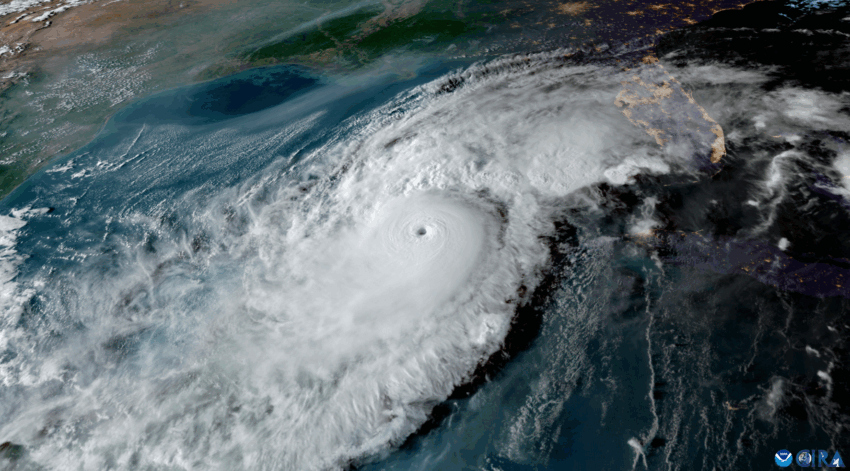Hurricanes begin as small disturbances over warm ocean waters, but within days, they can intensify into deadly, high-speed storms capable of widespread destruction. Hurricanes like Helene, Milton, and Katrina, one of the deadliest and costliest natural disasters in U.S. history, demonstrate how quickly a storm can strengthen, unleashing catastrophic winds, flooding, and devastation in their path.
Already this year, Hurricane Erick made landfall in Mexico on June 19, 2025, as a powerful Category 3 storm, marking the earliest major hurricane on record to strike the country before July, and signaling the potential for an active season ahead. Hurricane Melissa, one of the most powerful Atlantic storms on record, devastated the Caribbean in late October 2025. Making landfall in Jamaica on October 28, 2025, as a Category 5 hurricane, Melissa unleashed catastrophic winds and torrential rain across the region.
The 2025 Atlantic hurricane season runs from June 1 through November 30. The National Oceanic and Atmospheric Administration (NOAA) warns that it could be an intense one — possibly rivaling 2024, among the costliest seasons on record. When hurricanes strike, they can flatten homes, knock out power grids, and leave residents without clean water, food, or shelter.
To help you stay informed and prepared, here are key facts about hurricanes, including how they form, how to protect you and your family, and how to support those impacted. Discover how World Vision is responding to help vulnerable communities recover from these powerful storms.
Hurricanes: Facts, FAQs, and how to help
- What is the outlook for the 2025 hurricane season?
- When is hurricane season?
- How do I prepare for a hurricane?
- What is a hurricane, and how does it form?
- What are the five characteristics of a hurricane?
- Why are hurricanes dangerous?
- What’s the difference between a tropical depression, tropical storm, hurricane, and major hurricane?
- What are hurricane categories, and what do they mean?
- How do tropical storms and hurricanes get their names?
- What have been some of the worst hurricanes to strike the U.S.?
- How can I help people affected by hurricanes and other disasters in the U.S.?
- How does World Vision respond to emergencies globally?
What is the outlook for the 2025 hurricane season?
Meteorologists expect another busy Atlantic hurricane season in 2025. NOAA’s weather service now estimates a 50% chance of an above-normal season, a 35% chance of near-normal activity, and a 15% chance of a below-normal season. This updated prediction is similar to the initial outlook issued in May.
In its latest update, NOAA projects 13 to 18 named storms, with 5 to 9 likely to become hurricanes and 2 to 5 reaching major hurricane strength, defined as sustained winds exceeding 110 mph.
By comparison, an average Atlantic season produces about 14 named storms, seven hurricanes, and three major hurricanes.
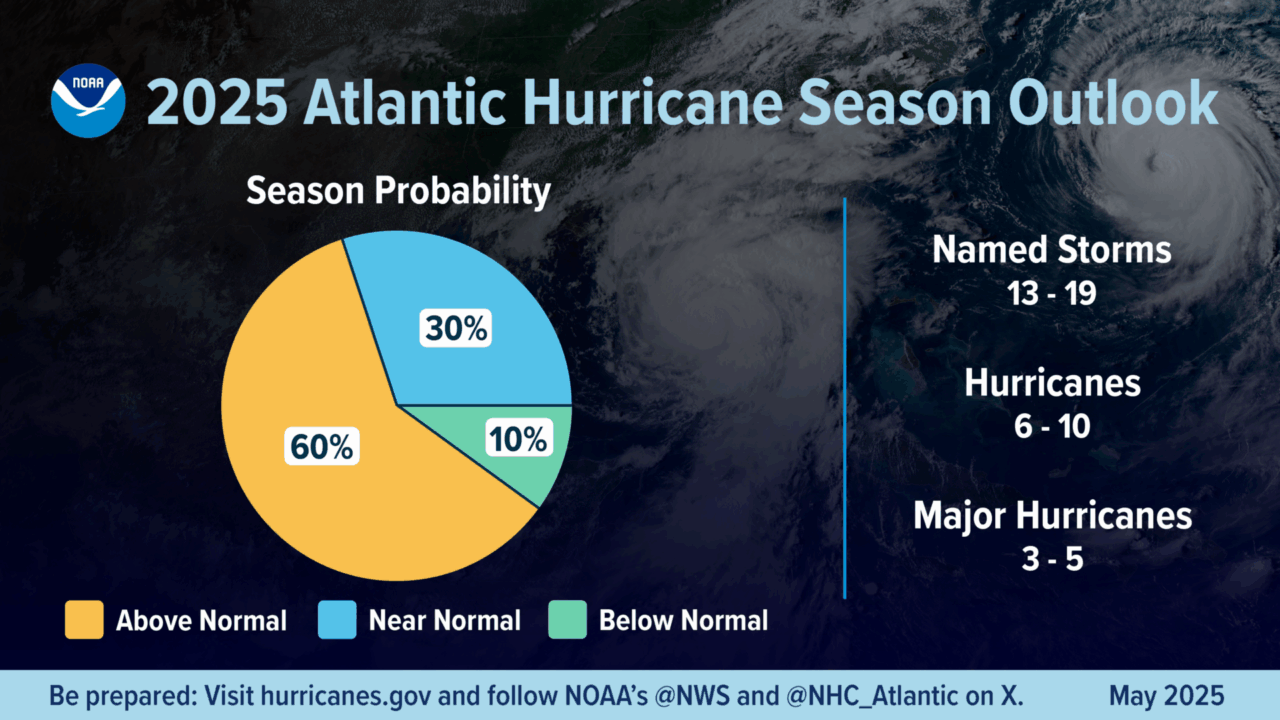
When is hurricane season?
Hurricane season varies by region, but September is the most active month for hurricanes globally. Here’s a breakdown by region and when storms are most likely to occur:
-
-
- Atlantic Ocean
- Season: June 1 to November 30
- Peak activity: late August through September
- More than 97% of tropical storm activity occurs during this period
- Northeast Pacific basin
- Season: late May and running until early November
- Peak activity: late August through early September
- Northwest Pacific basin (typhoons)
- Season: July to November
- Peak activity: late August and early September
- North Indian basin
- Season: April to December
- Peak activity: May and November
- Southwest Indian and Australian/Southeast Indian basins
- Season: late October to May
- Peak activity: mid-January to early March
- Australian/Southwest Pacific basin
- Season: late October to early May
- Peak activity: late February to early March
- Atlantic Ocean
-
How do I prepare for a hurricane?
If a hurricane is forecast for your area, it’s important to take the following steps to ensure your safety and preparedness:
-
-
- Stay informed: Sign up for emergency alerts and follow trusted local news outlets for the latest weather updates and evacuation orders.
- Prepare an evacuation plan: Know your evacuation routes and emergency shelter information. Fill up on gas, pack a “go bag,” and identify and inform an out-of-state contact person. Designate a meeting place for your loved ones in case you get separated.
- Pack emergency supplies: Prepare an emergency supply kit that includes non-perishable food, drinking water, a flashlight, extra clothes, medications, protective gear, a battery-powered radio, hygiene items, critical documents (including a list of all your possessions), sentimental items, and pet supplies.
- Secure your home: Take measures to protect your property from high winds and potential flooding. Install storm shutters or board up windows, elevate furnaces, and secure or remove items that could become projectiles in strong winds.
- Know when to evacuate, or when to shelter in place. If local authorities issue an evacuation order, follow it promptly. If you’re not in an evacuation zone, move to higher ground and stay indoors, monitoring weather updates and other advisories closely.
-
Want more tips? Visit ready.gov for up-to-date resources and information.
What is a hurricane, and how does it form?
A hurricane is an extremely strong storm that gains power from warm tropical waters. According to NOAA, hurricanes often start as low-pressure areas called tropical waves, which move through moist tropical regions.
As these weather systems move across the tropics, warm air from the ocean rises into the storm, creating an area of low pressure underneath. More air rushes in, which then rises, cools, and forms clouds and thunderstorms. The water in the clouds condenses, releasing heat that fuels the storm even more.
When the storm’s wind speeds reach 74 mph (119 km/h), it is officially classified as a hurricane. The term “hurricane” is interchangeable with “tropical cyclone” and “typhoon” — they all refer to the same type of weather phenomenon, but are called different names depending on their location in the world.
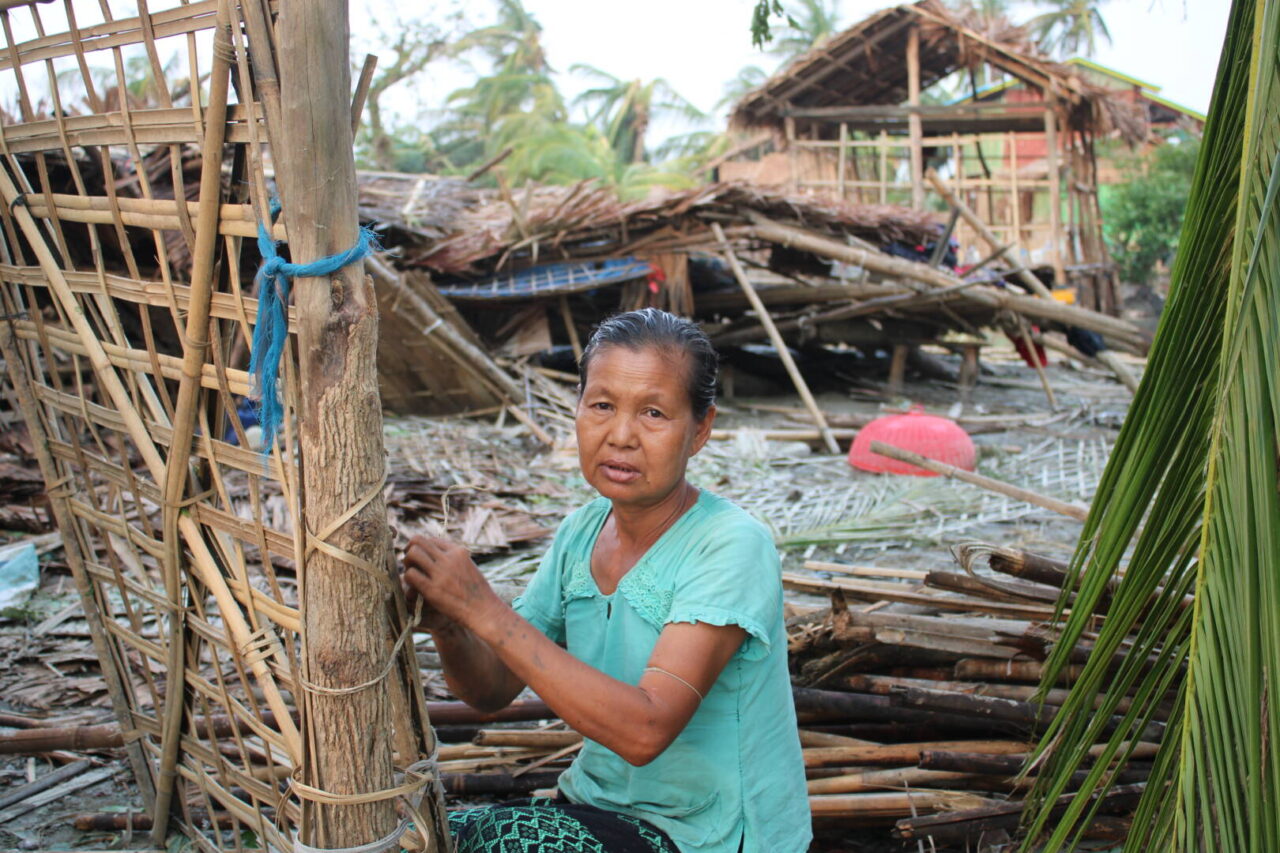
What are the five characteristics of a hurricane?
Hurricanes are complex weather systems, and their characteristics can vary depending on the storm’s intensity, size, and other factors. However, their main features can be summarized as follows:
-
-
- Outflow is the high-level clouds moving outward from the hurricane.
- Feeder bands are the areas of heavy rain and gusty winds fed by the warm ocean. They get more pronounced as the storm intensifies.
- The eyewall is the band of clouds, intense wind, and rain surrounding the eye of the hurricane. Here, the air moves violently toward the eye and upward into the clouds.
- The eye is the relatively calm and clear area at the center of the storm.
- The storm surge is the flood of ocean water pushed inland as the hurricane approaches land.
-
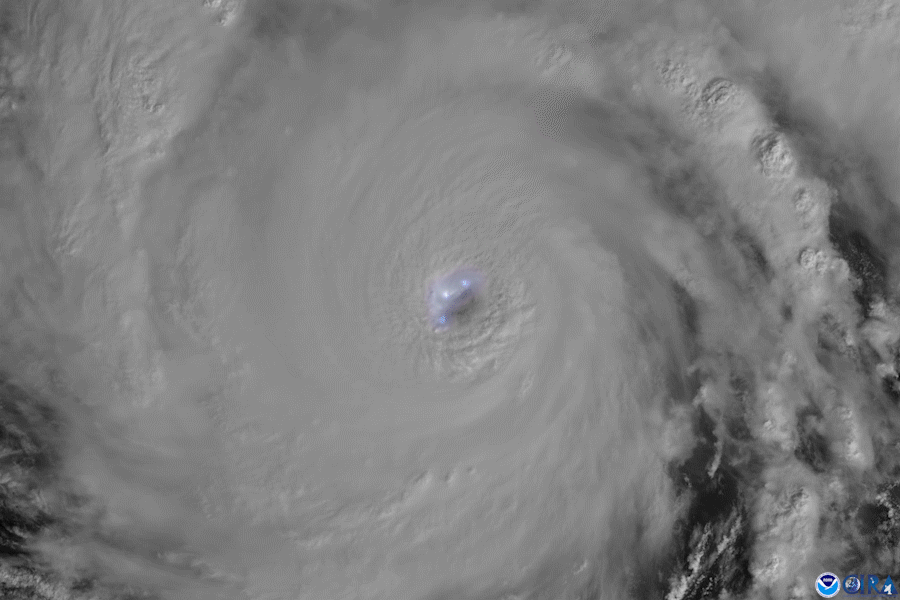
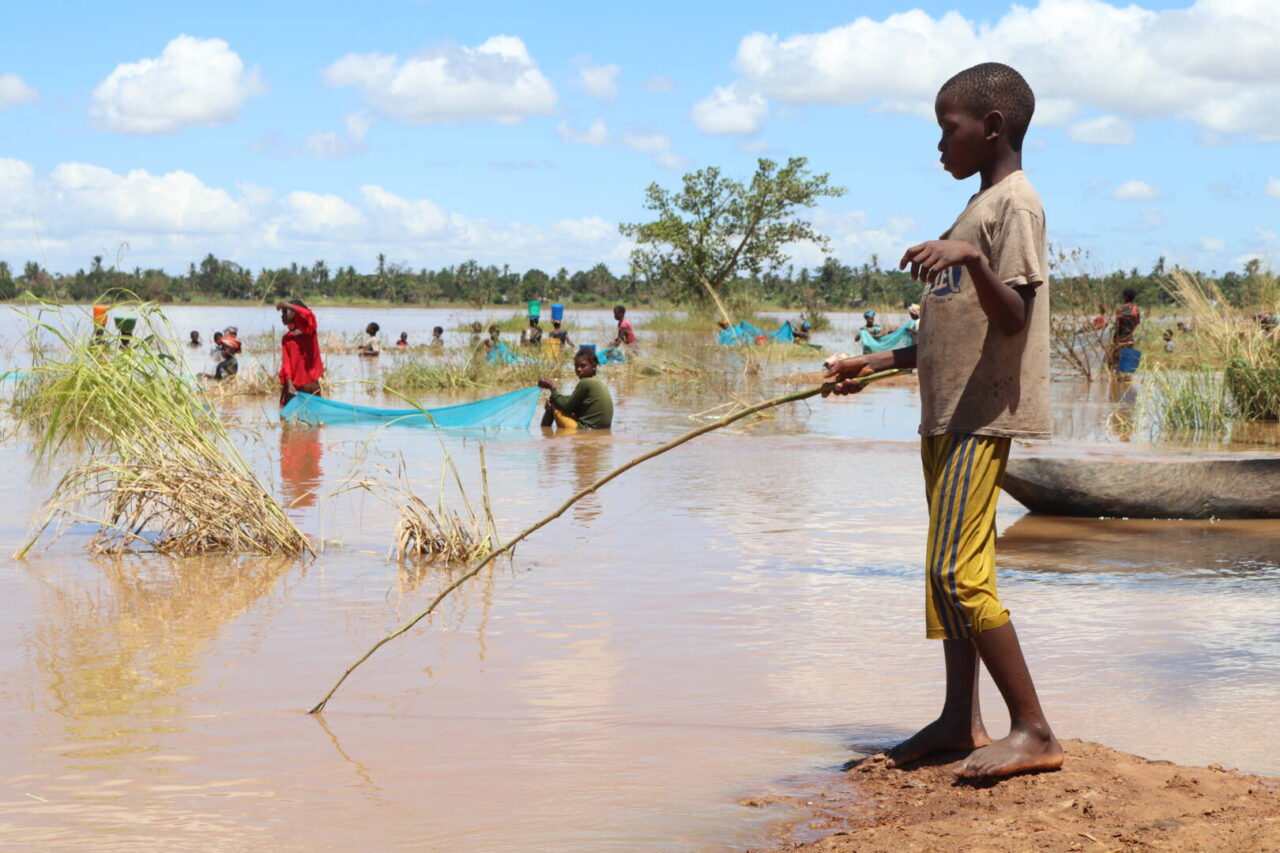
Why are hurricanes dangerous?
Hurricanes pose significant dangers due to several factors. The powerful winds can damage or destroy buildings, homes, trees, and other property, and knock out power over huge areas. People can be lifted off their feet by high winds or injured by flying debris.
Coastal areas are vulnerable to storm surges, which can result in flooding and over-saturation of the ground, increasing the risk of landslides. Rural communities are often cut off when landslides destroy roads and disrupt power infrastructure. The destruction can leave children and people who rely on regular medical treatment or supplies especially vulnerable. Even after a hurricane passes, damaged materials need to be removed from flooded homes, as lingering moisture can foster the growth of dangerous mold.
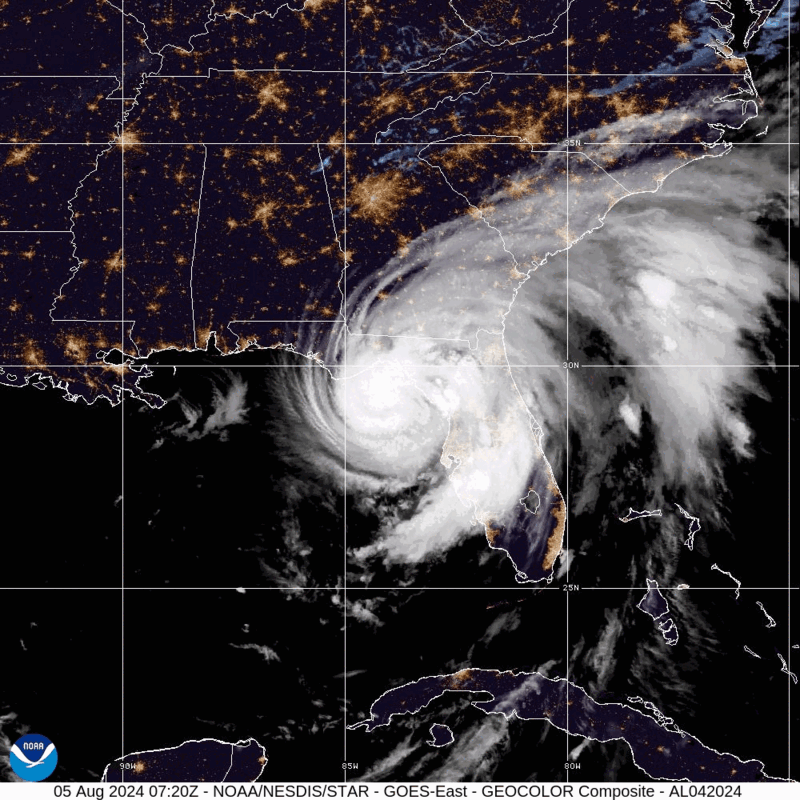
What’s the difference between a tropical depression, tropical storm, hurricane, and major hurricane?
The distinction between a tropical depression, tropical storm, hurricane, and major hurricane is the wind speed:
-
-
- Tropical depression: Wind speed less than 39 mph
- Tropical storm: Wind speed between 39 mph and 73 mph
- Hurricane: Wind speed between 74 mph and 110 mph
- Major hurricane: Wind speed greater than 110 mph
-
What are hurricane categories, and what do they mean?
A hurricane category, determined by the Saffir–Simpson hurricane wind scale, lets people know how powerful the hurricane will be:
-
-
- Category 1: Very dangerous winds between 74 and 95 mph will cause some damage, and power outages for a few days are likely.
- Category 2: Extremely dangerous winds between 96 and 110 mph will cause extensive damage, and a near-total power loss that could last up to a few weeks is expected.
- Category 3: Devastating damage from winds between 111 and 129 mph will occur. Electricity and water will be unavailable for several weeks, and trees will be snapped or uprooted, blocking roads.
- Category 4: Catastrophic damage will occur from winds between 130 and 156 mph. Even well-built framed homes will lose most of the roof structure and/or some exterior walls. Fallen trees and power poles will likely isolate residential areas, and power outages could last possibly months.
- Category 5: Catastrophic damage will occur from winds 157 mph or higher. A high percentage of homes will be destroyed, and most areas will be uninhabitable for weeks or months.
-
How do tropical storms and hurricanes get their names?
Meteorologists name tropical storms and hurricanes to avoid confusion and streamline communication. Before the 1950s, storms were identified in chronological order during a given year, but this occasionally led to miscommunication when multiple storms were happening. Since 1953, the World Meteorological Organization (WMO) has named tropical storms and hurricanes using a strict system: a 21-letter list of names, alternating between male and female names, on a six-year rotation. The list excludes the letters Q, U, X, Y, and Z. Every seventh year, the names recycle, unless the WMO decides to retire a name because it was particularly deadly or costly. Here’s the list of tropical cyclone names for the next six years.
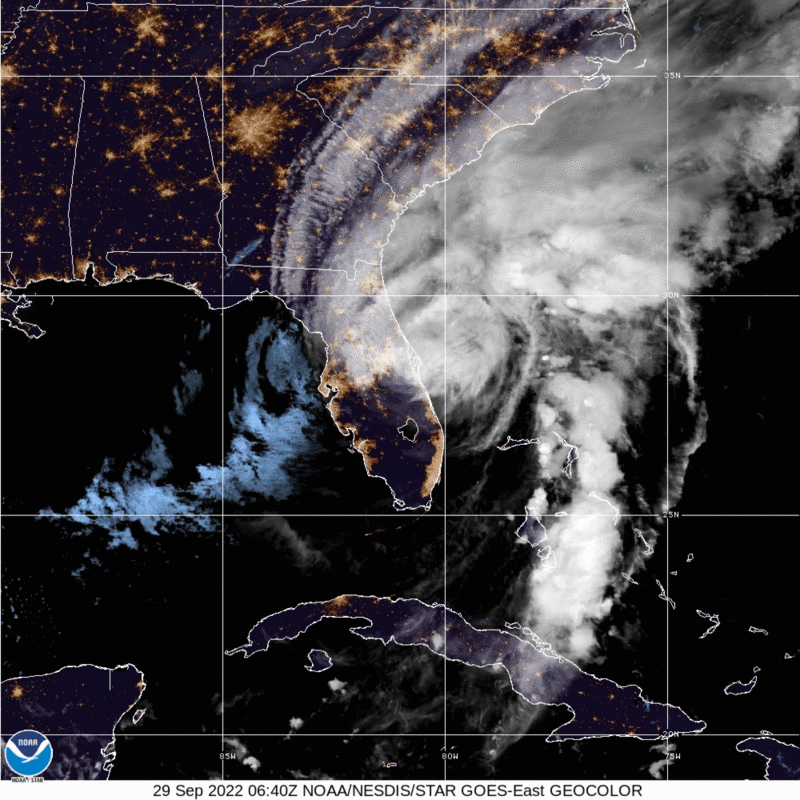
What have been some of the worst hurricanes to strike the U.S.?
The 2022 Atlantic hurricane season stands out as especially deadly and destructive in recent years. Hurricane Ian made landfall along the southwestern Florida coast on September 28, 2022, bringing catastrophic damage with its high winds, heavy rainfall, and storm surges.
Hurricane Helene, which came ashore in Florida on September 26, 2024, as a Category 4 hurricane, carved a huge swath of destruction across six states — Florida, North and South Carolina, Georgia, Tennessee, and Virginia — including in communities hundreds of miles inland that are not typically in the path of hurricanes. The death toll from Helene was second only to Hurricane Katrina in 2005.
Here are some of the most notable hurricanes that have hit the U.S.:
-
-
- The Great Labor Day Hurricane (1935): This Category 5 hurricane was the most intense hurricane on record to make landfall in the United States. It struck the Florida Keys with devastating winds and a massive storm surge.
- Hurricane Camille (1969): Camille made landfall as a Category 5 hurricane in Mississippi, causing widespread infrastructure damage and loss of crops due to high winds and water.
- Hurricane Andrew (1992): Andrew struck South Florida as a Category 5 hurricane, with winds reaching 165 mph, before hitting central Louisiana as a Category 3 hurricane.
-
-
-
- Hurricane Katrina (2005): Katrina was the costliest hurricane in U.S. history ($192.5 billion*). Katrina caused catastrophic flooding in the Gulf Coast, particularly in Louisiana and Mississippi.
- Hurricane Harvey (2017): Harvey made landfall in Texas, bringing unprecedented rainfall and severe flooding to Houston and the surrounding areas. Due to the extensive property damage, it ranks among the costliest hurricanes ($152.5 billion*).
- Hurricane Ian (2022): Ian raked a path of destruction across the southeast U.S., devastating the Gulf Coast of Florida before making final landfall in South Carolina two days later ($114 billion*).
-
*Costs have been adjusted for inflation.
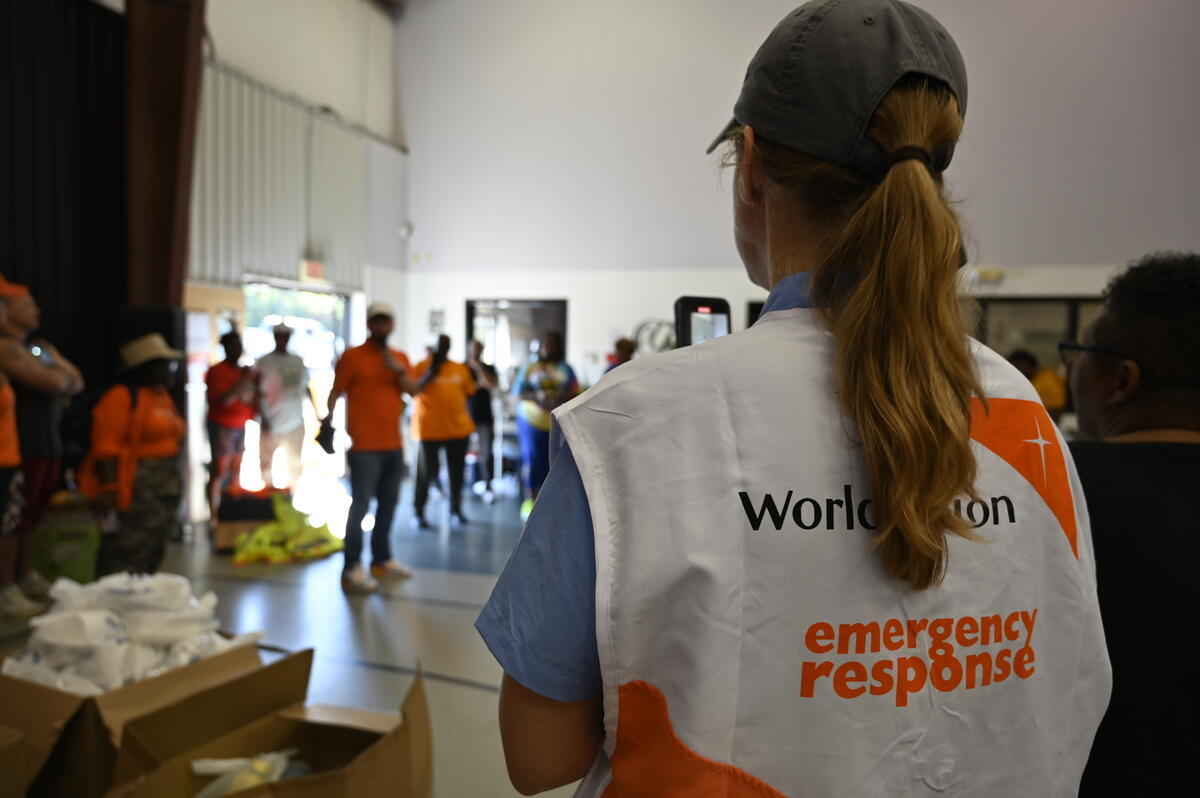
How can I help people affected by hurricanes and other disasters in the U.S.?
How does World Vision respond to emergencies globally?
With decades of experience and an established global network of trained emergency staff, World Vision responds to multiple major emergencies at any given time, including earthquakes, conflicts and refugee crises, floods, and hurricanes.
In 2024, World Vision responded to 84 disasters and emergencies across 65 countries, delivering lifesaving aid and ongoing support to more than 35.2 million people.
During and after a crisis, we provide food, water, hygiene, and other basic relief items, including cleanup supplies. We also promote personal hygiene practices to guard against deadly disease outbreaks. Our child protection programs respond to urgent cases, such as children separated from their families, abuse, exploitation, and other forms of violence. We also respond to health, nutrition, and education needs.
We aim to support families in the immediate aftermath of a disaster and throughout the challenging process of rebuilding their lives and livelihoods. World Vision works alongside communities to help families rebuild their homes and establish permanent housing, sustainable access to clean water, food security, and access to quality education.
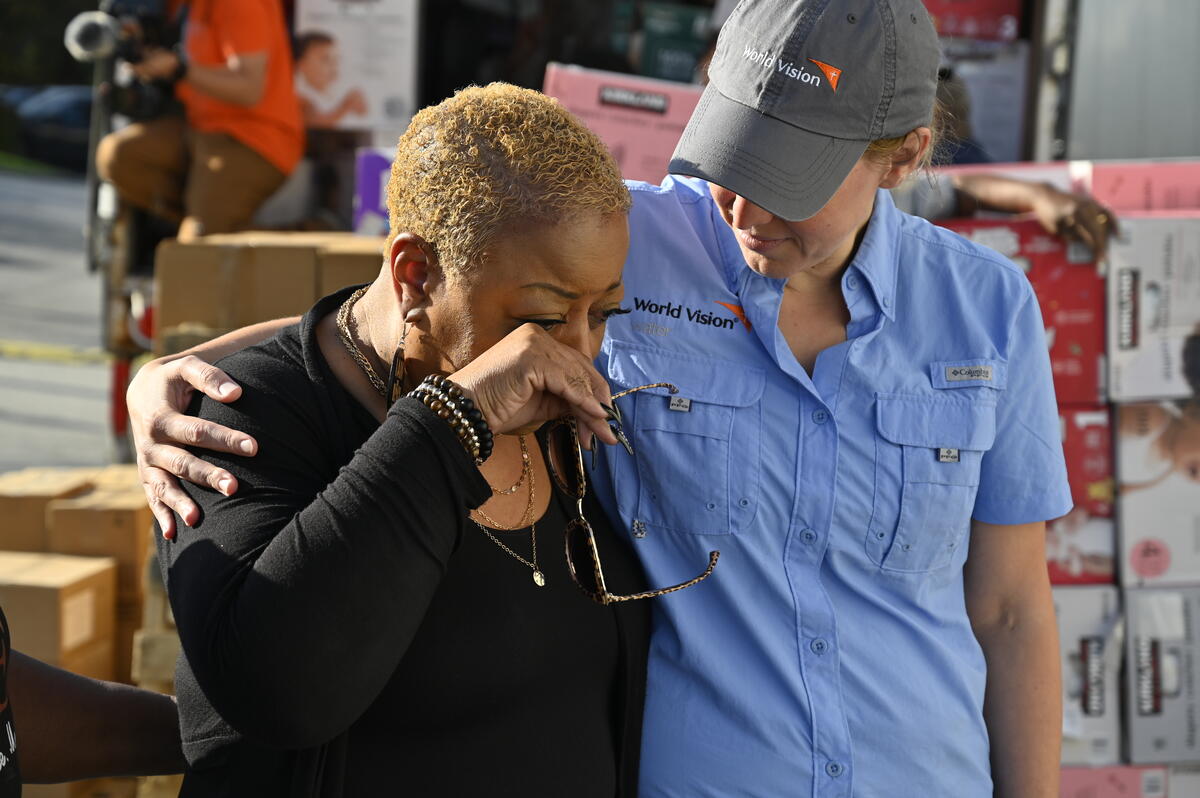
In the wake of disasters in the U.S., we are often one of the first organizations to respond. With our decades of experience in emergency response, fully staffed and stocked warehouses around the nation, and a network of over 3,300 partners, we’re able to provide immediate relief to affected children and families through essential supplies.
Thanks to the generosity of our donors and partners, we have been able to make a lasting impact together. In 2024, in partnership with 27 churches and nonprofits, we served 52,465 children and adults through emergency and disaster relief in the U.S. and Mexico.
